When it comes to the songbirds of the United States, Blue Jays stand out as one of the most visually stunning examples. Not only do they feature stunning sapphire plumage, but they also wear a stately crest of backward swooping feathers.
While there’s no denying that the Blue Jay is a unique example of our backyard feathered friends, it’s easy to confuse other winged creatures with these charming chirpers. Let’s explore 17 birds that look like Blue Jays and some easy ways to tell them apart.
Contents
1. Belted Kingfisher
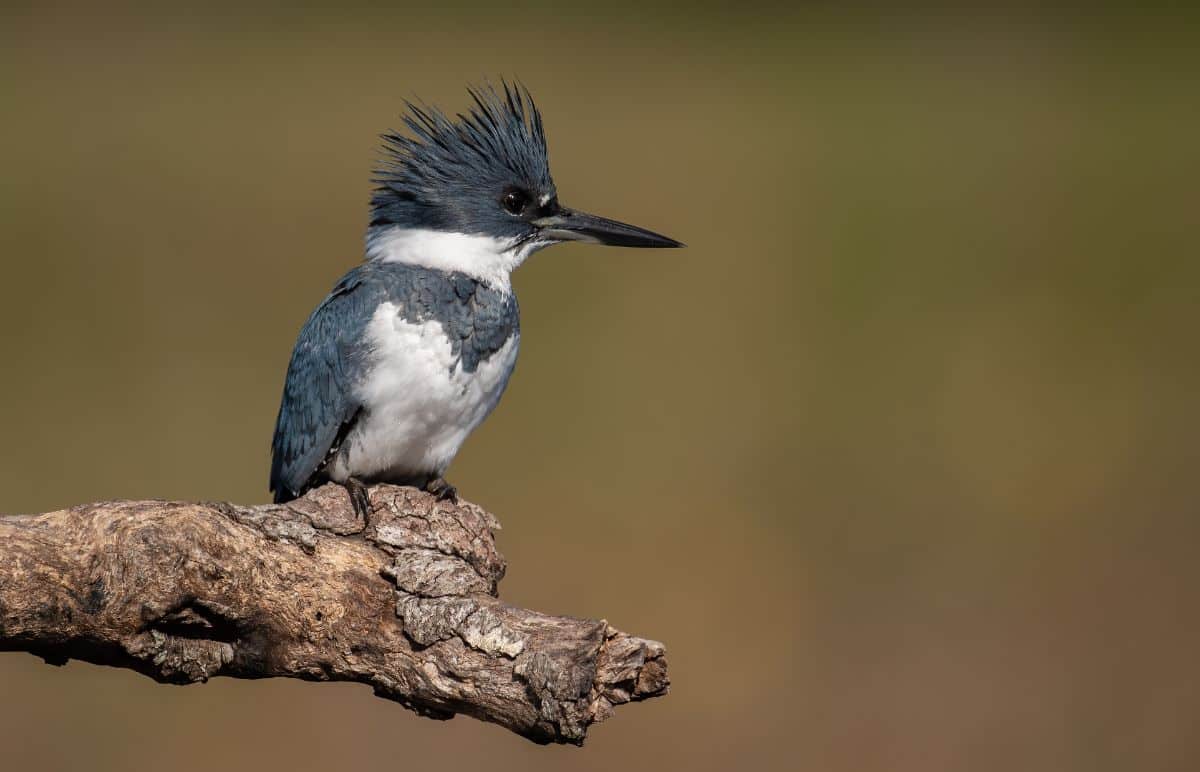
The Belted Kingfisher is dapper in its own right, sporting a cap of crested feathers similar to the Blue Jay. However, its coloration is a much duskier blue-gray with white and tawny stripes.
2. Black-throated Blue Warbler
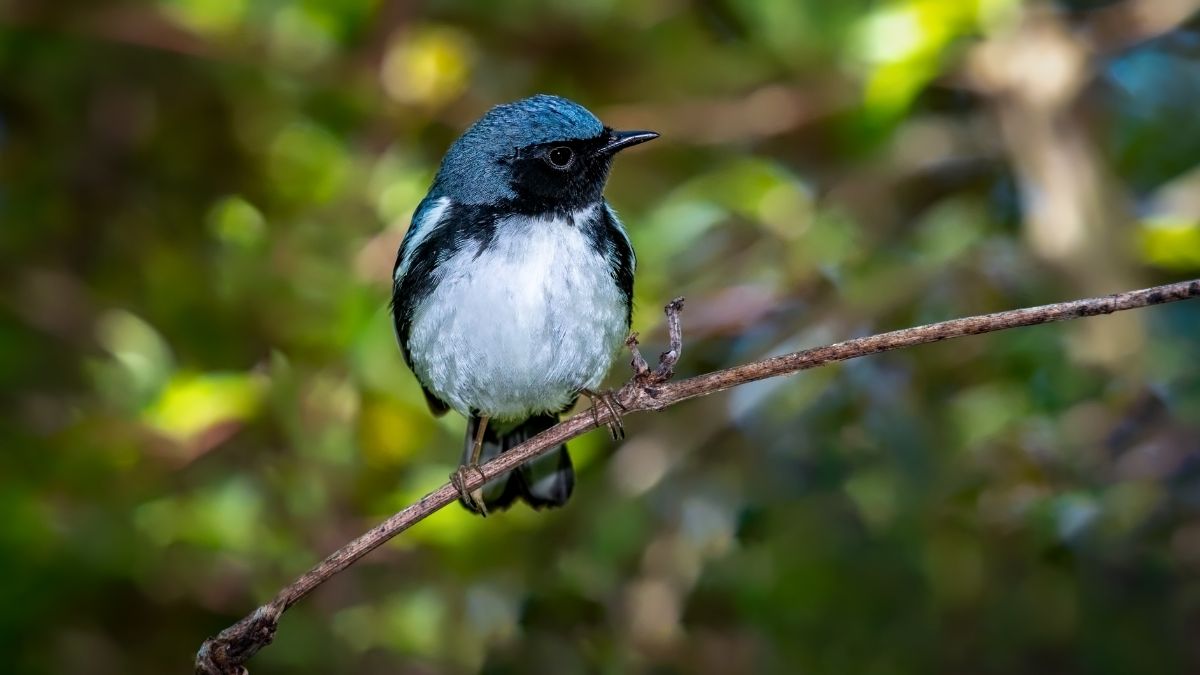
Of all the birds that look like Blue Jays, this species is the most similar in color. They have tri-tone plumage, most of which is a pale cerulean, but have a matching black mask with white accent marks.
3. Blue Grosbeak
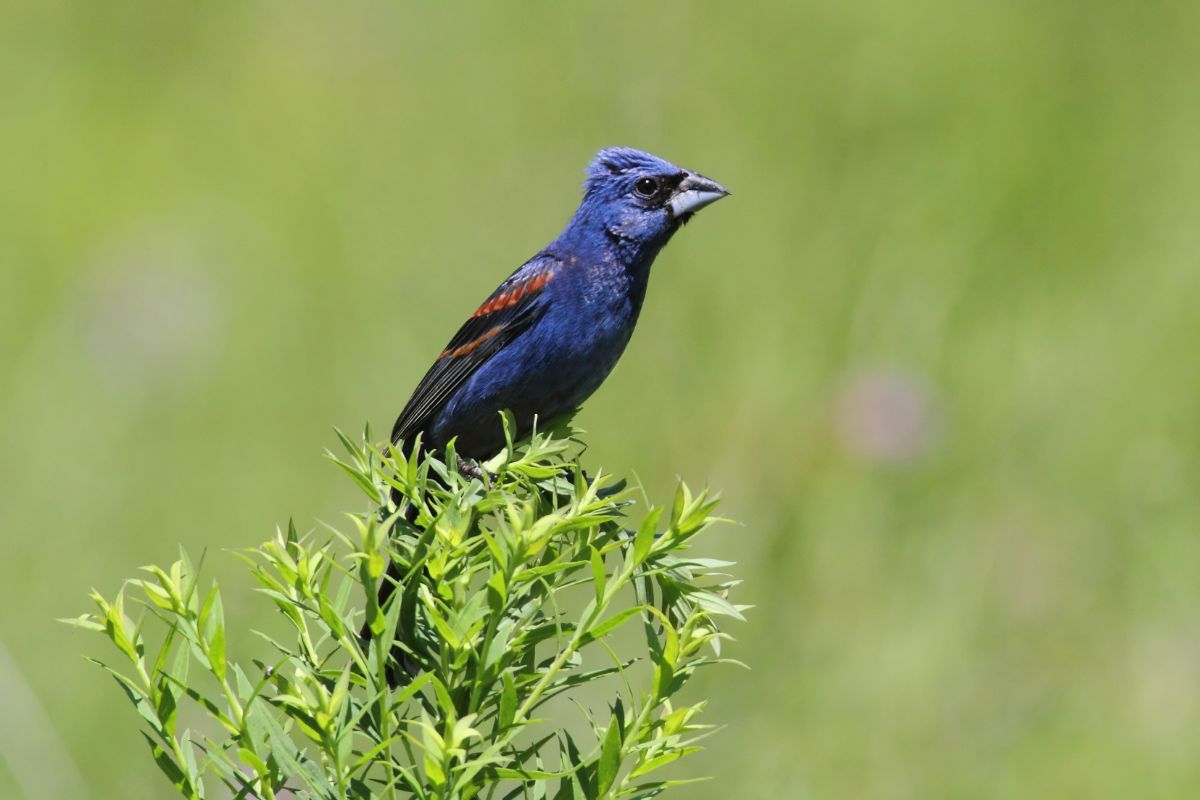
The silver, chestnut, and navy Blue Grosbeak is a member of the Bunting family and is related to Cardinals. If you spot this chipper little bird, it’s a male, as females are plainer to help them hide from predators while nesting.
4. Blue-gray Tanager
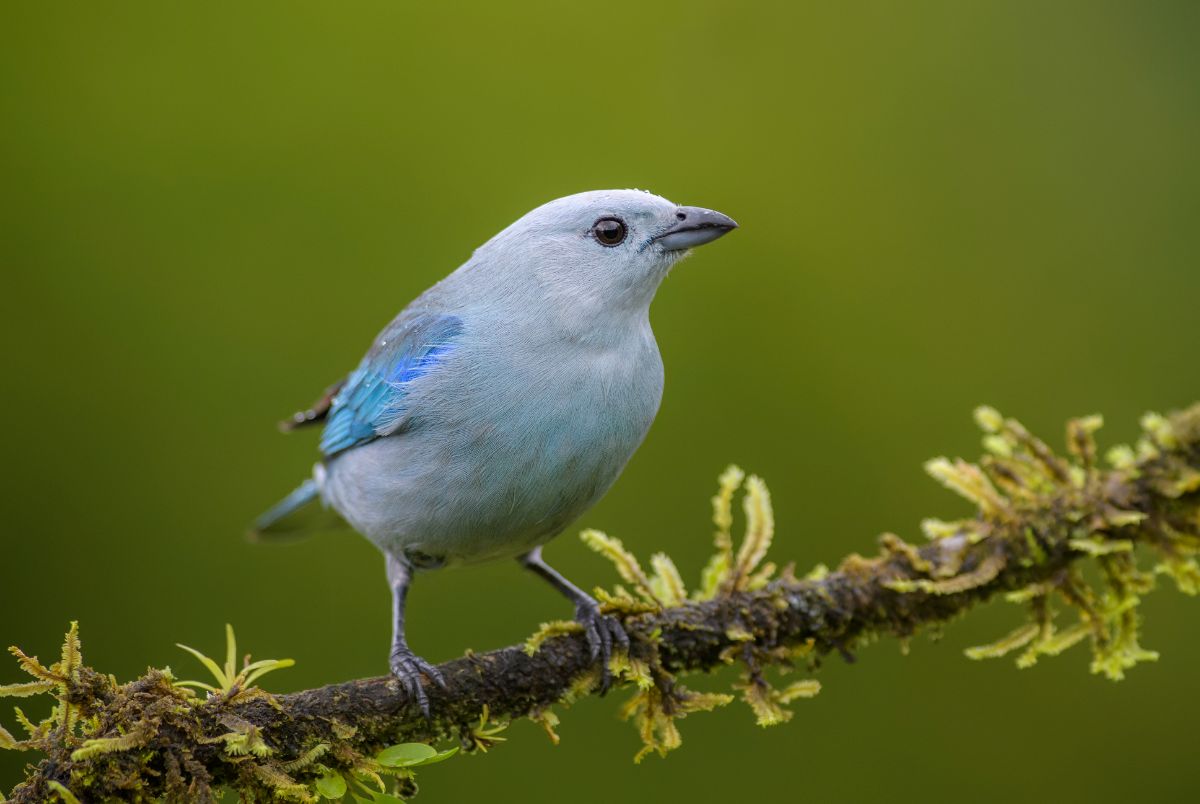
Hailing from the Amazon Basin north to Mexico, the plushly-colored Blue-gray Tanager is a lovely little songbird that goes by the nickname “Blue Jean.” The Tanager and Blue Jay’s habitats don’t overlap, so if you’re south of the border, this songbird is more likely to be encountered.
5. California Scrub Jay
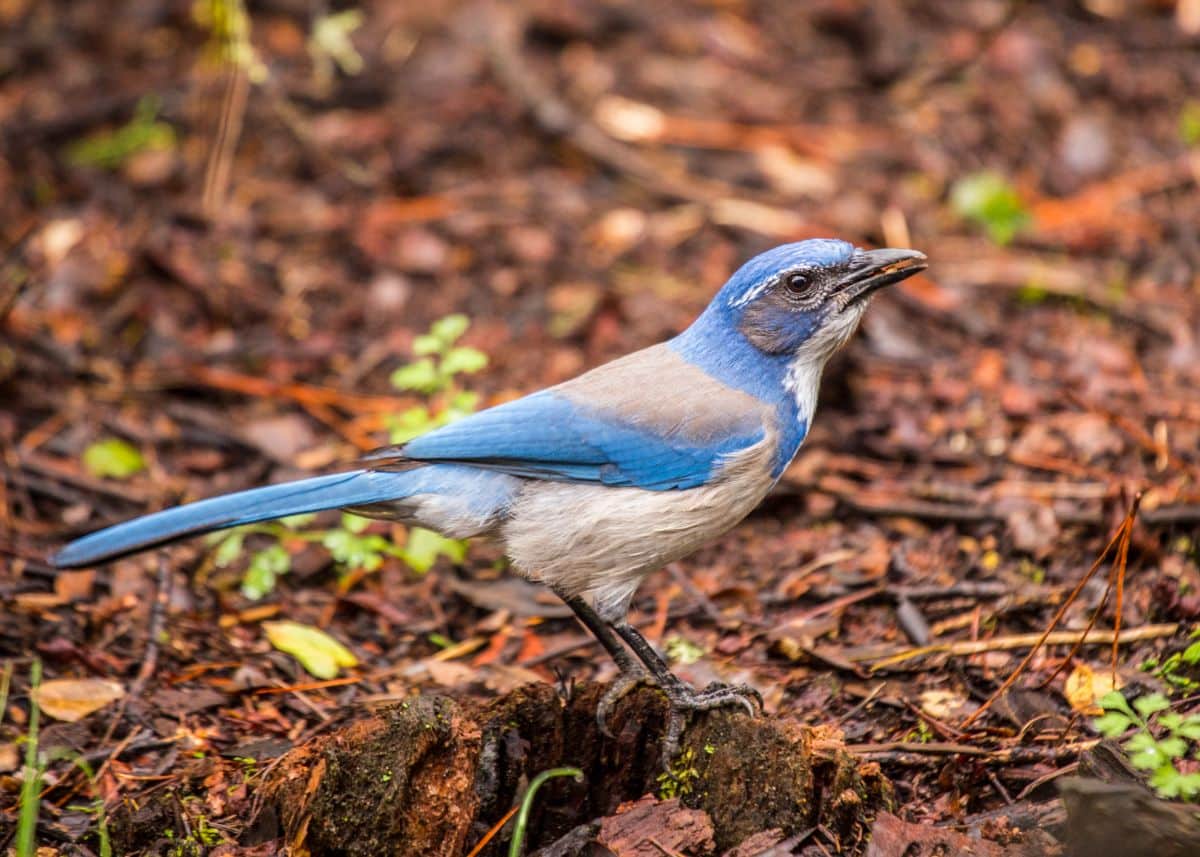
While this species has a similar coat of azure feathers with a downy white belly, they lack the iconic crest of the classic Blue Jay. They have an amusing shock of white feathers above their eyes that resemble well-groomed brows.
6. Eastern Bluebird
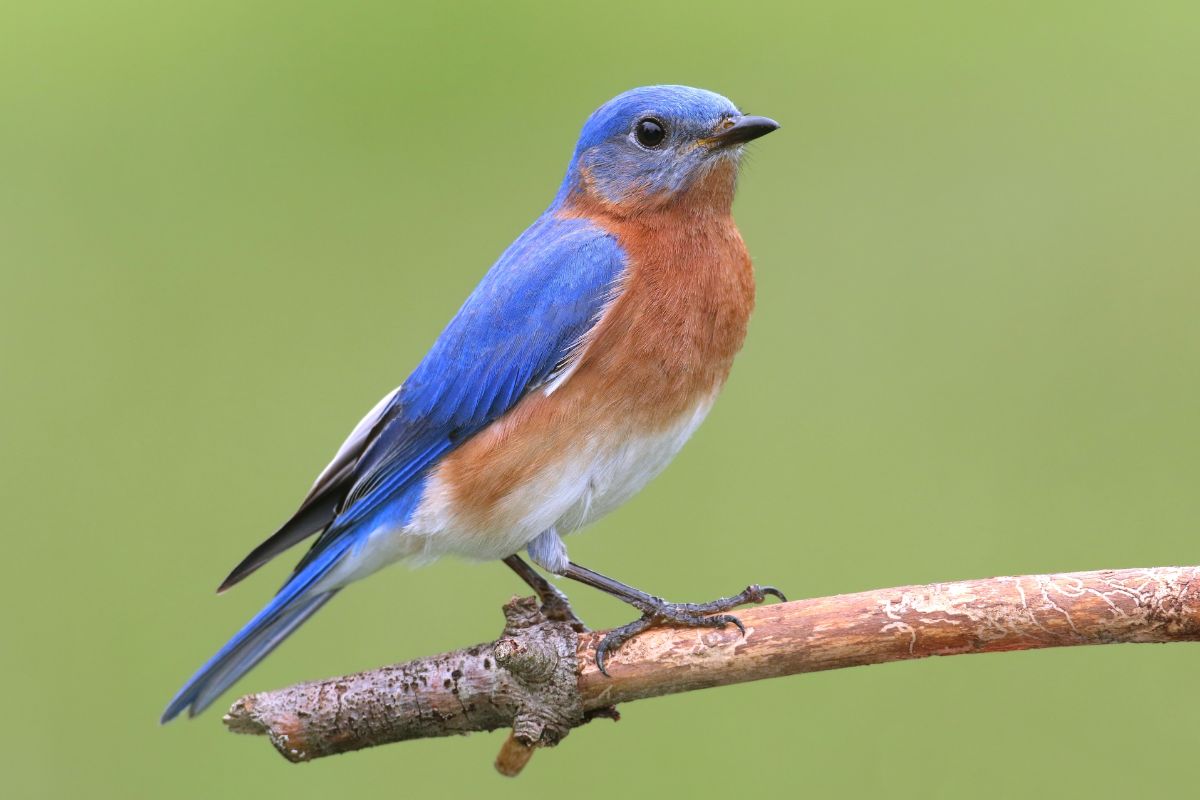
Beloved by nature enthusiasts and backyard bird watchers alike, the Eastern Bluebird is a plump little fellow with a nearly orb-shaped body, short tail, and flush of cinnamon-colored feathers adorning its puffed chest.
7. Cerulean Warbler
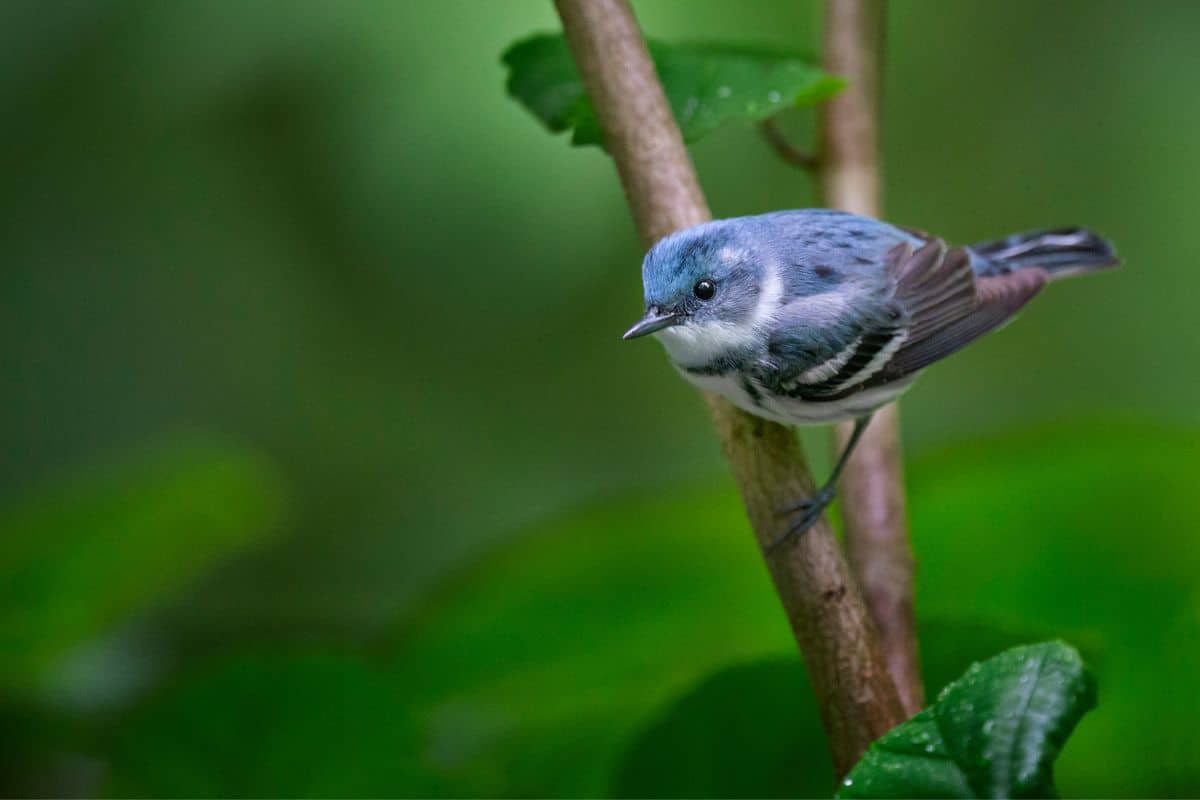
The tiny Cerulean Warbler dons a puff of speckled white, gray-blue, and black plumage that isn’t nearly as vivid as the Blue Jay. It also lacks the tell-tale crest and stately silhouette of the much larger songbird.
8. Florida Scrub Jay
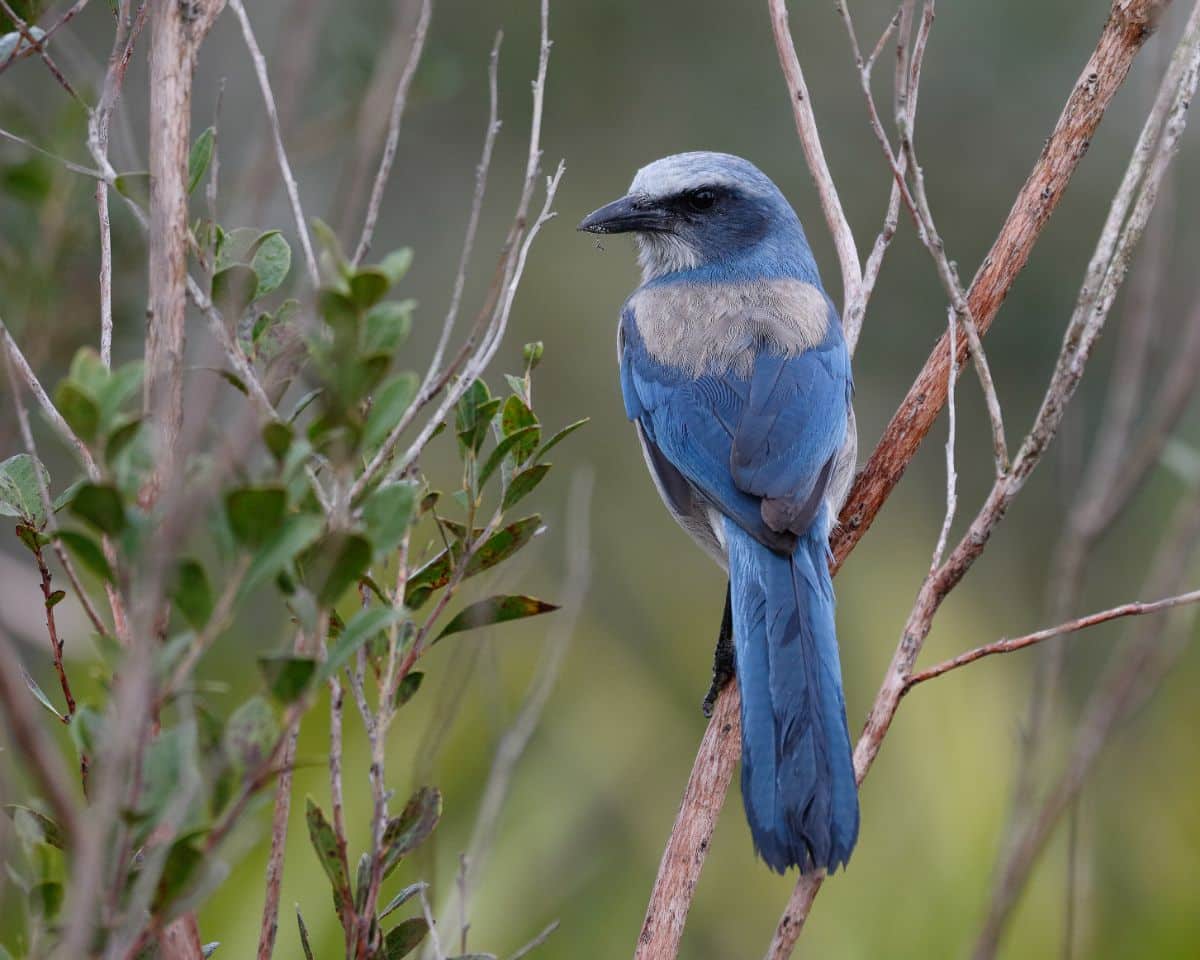
Unlike Blue Jays, the Florida Scrub Jay has less vivid coloration and a duller white flush on the forehead. Moreover, it’s crestless, with a stout neck that transitions to its stocky body.
9. Indigo Bunting
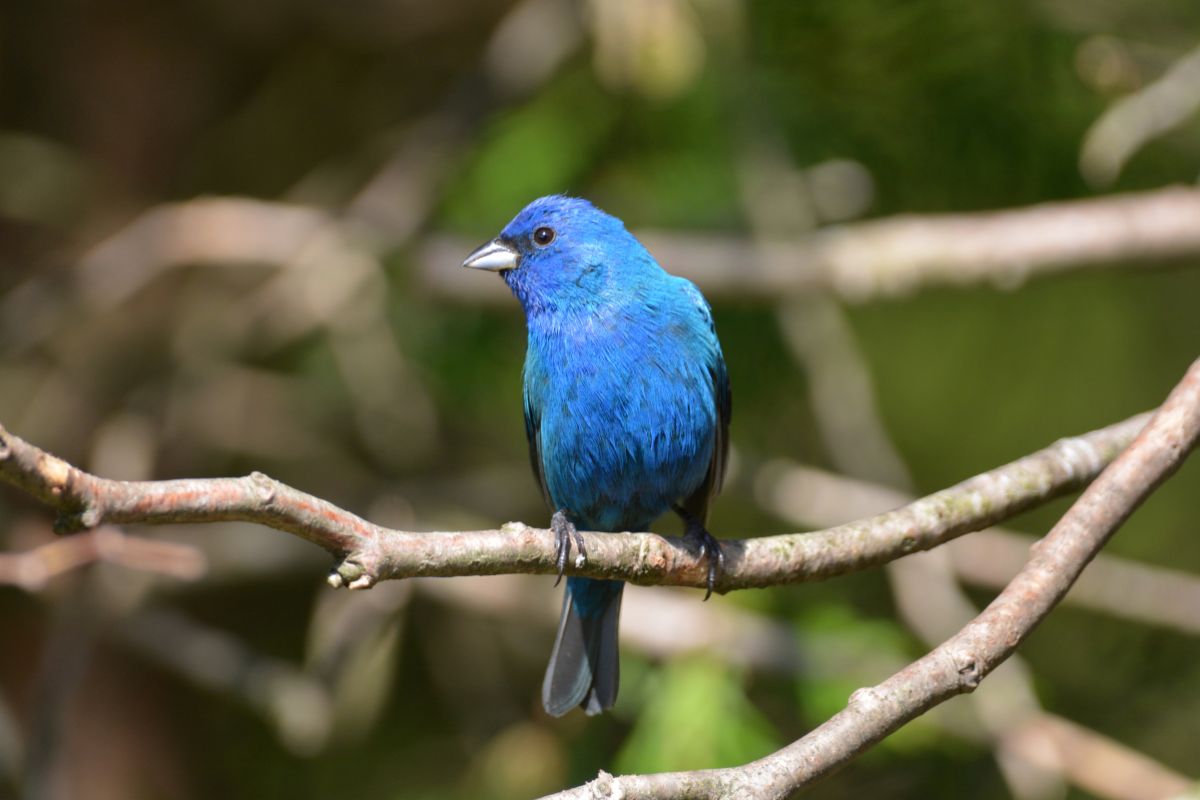
The brilliant blue, highly social Indigo Bunting is just as brightly colored as the Blue Jay, with the males having a more vivid tone than their female counterparts. In addition, the black bars on their wings are a close match for the Jay.
10. Island Scrub Jay
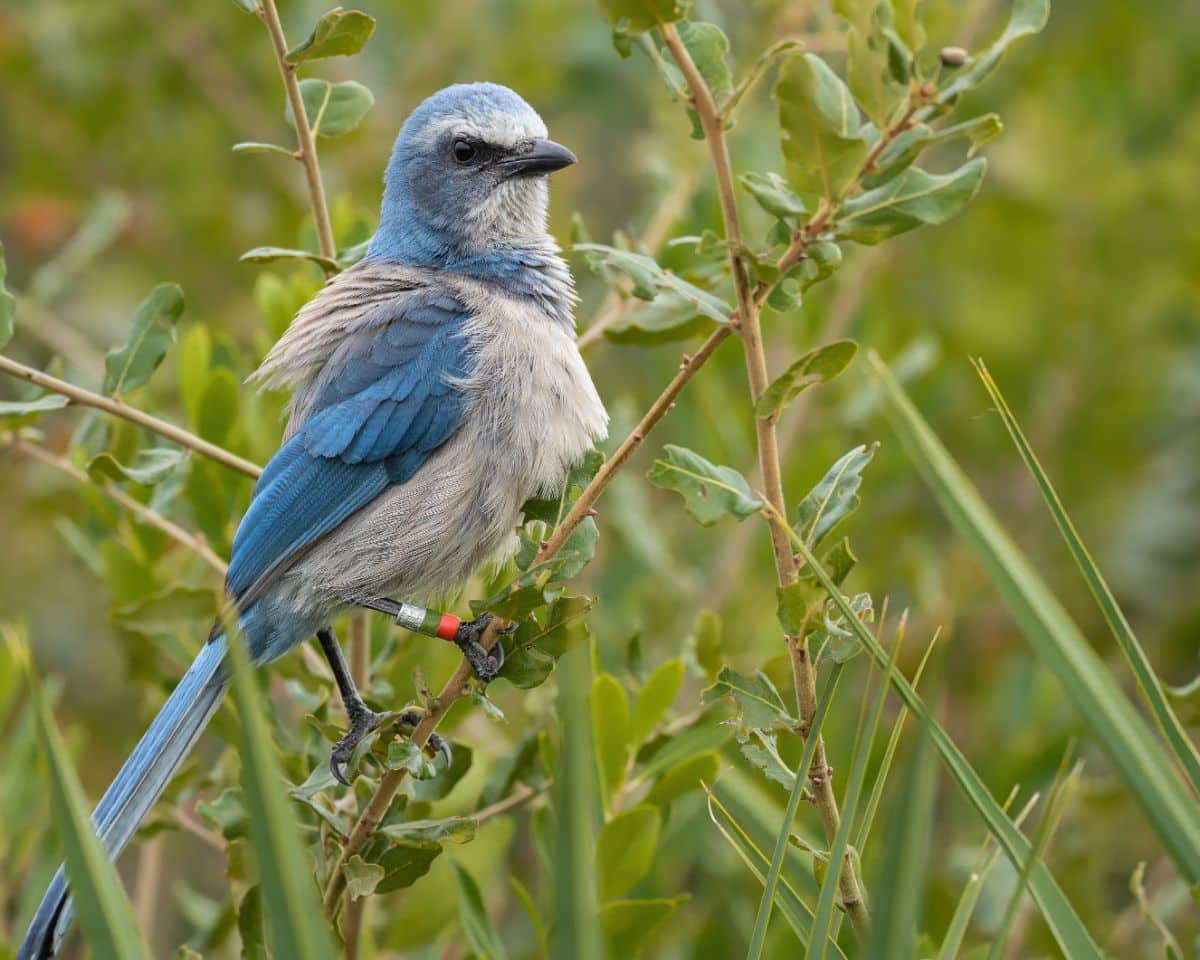
With feathers ranging from a rather dull, dusty blue to deep azure, the Island Scrub Jay is beloved by the residents of Santa Cruz, the only place it calls home. Its black and white facial accents give it a very similar appearance to Blue Jays, though it has a smooth head.
11. Lazuli Bunting
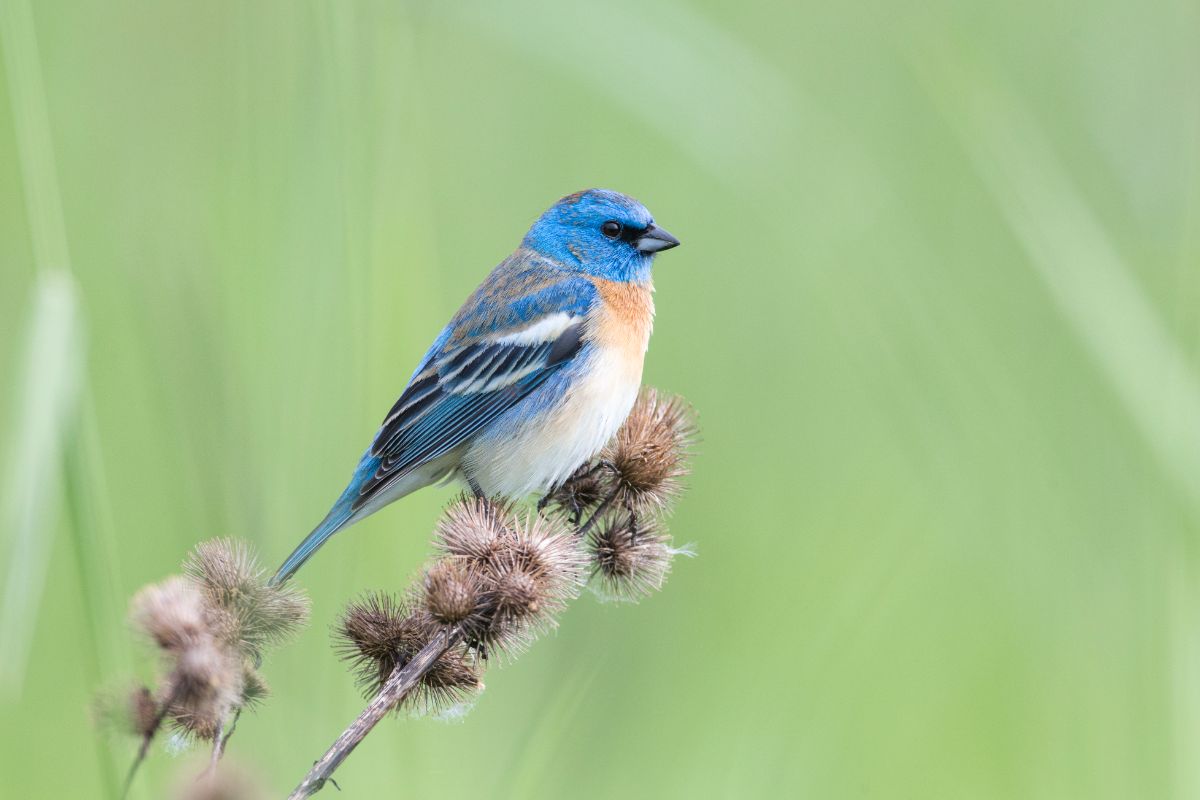
Named for the lapis lazuli, a deep blue semi-precious gemstone, the Lazuli Bunting is just as gorgeously colored as its namesake mineral. They more resemble Eastern Bluebirds than Blue Jays due to the tawny flush of feathers on their chest.
12. Mexican Jay
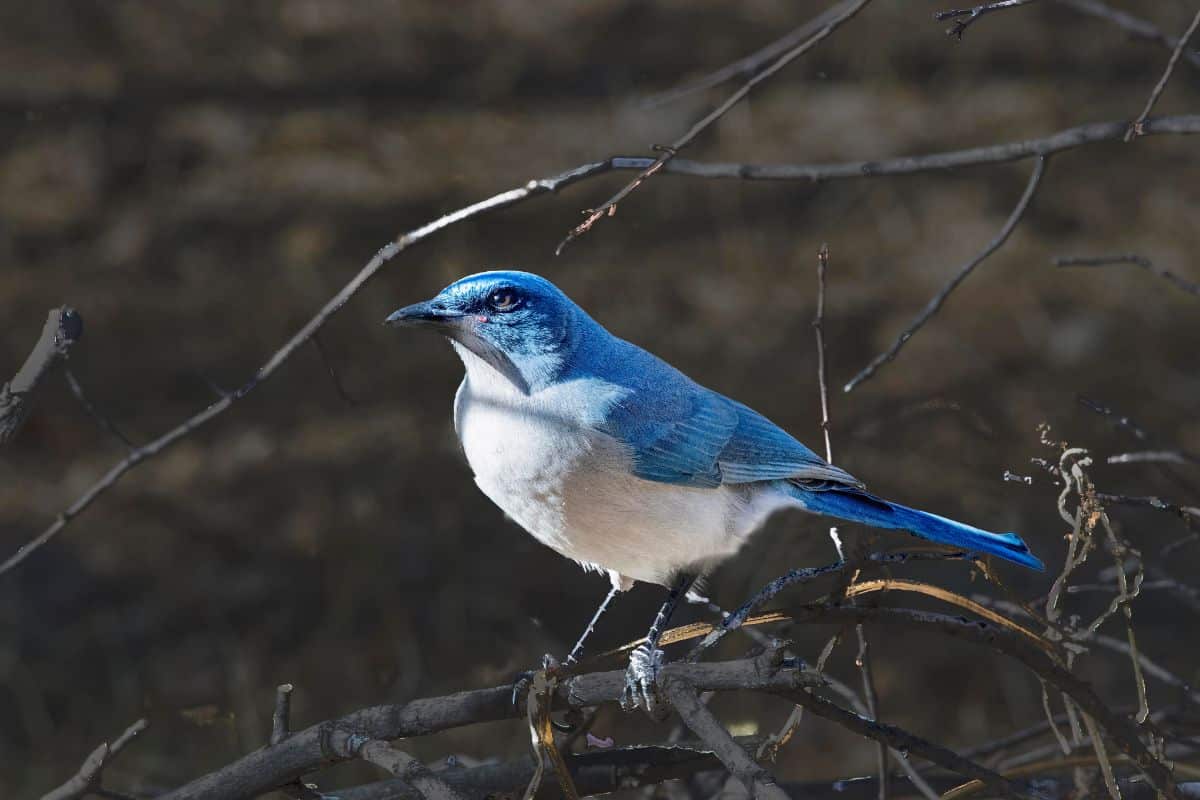
The Mexican Jay has a much smaller range than the Blue Jay, sticking primarily to the southwest United States and Mexico. Because of their white bellies, they are most often confused for Blue Jays when viewed from below, but their lack of head crest and facial markings set them apart.
13. Mountain Bluebird
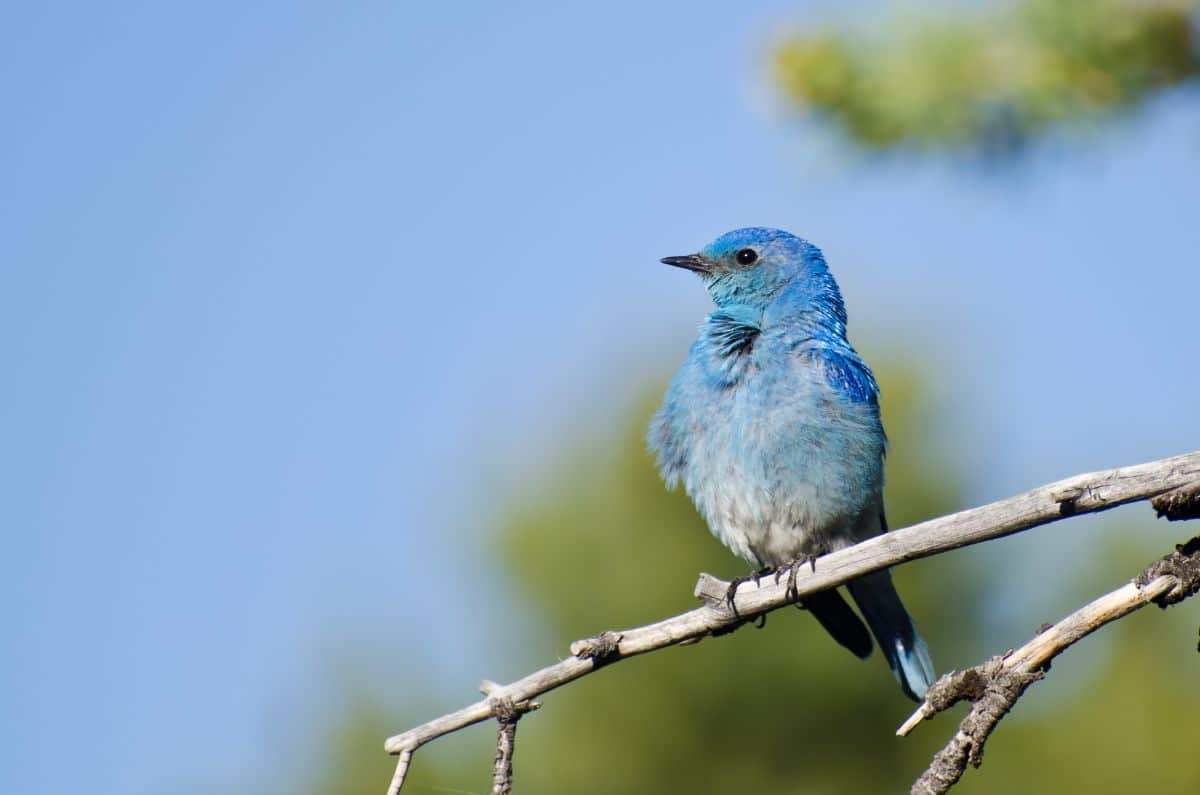
Perhaps the most charismatic and charming North American songbird, the Mountain Bluebird is a tiny shock of brilliant blue plumage with a gradient pattern that transitions from powdery turquoise to white on the belly. It’s much smaller and rounder than Blue Jays.
14. Pinyon Jay
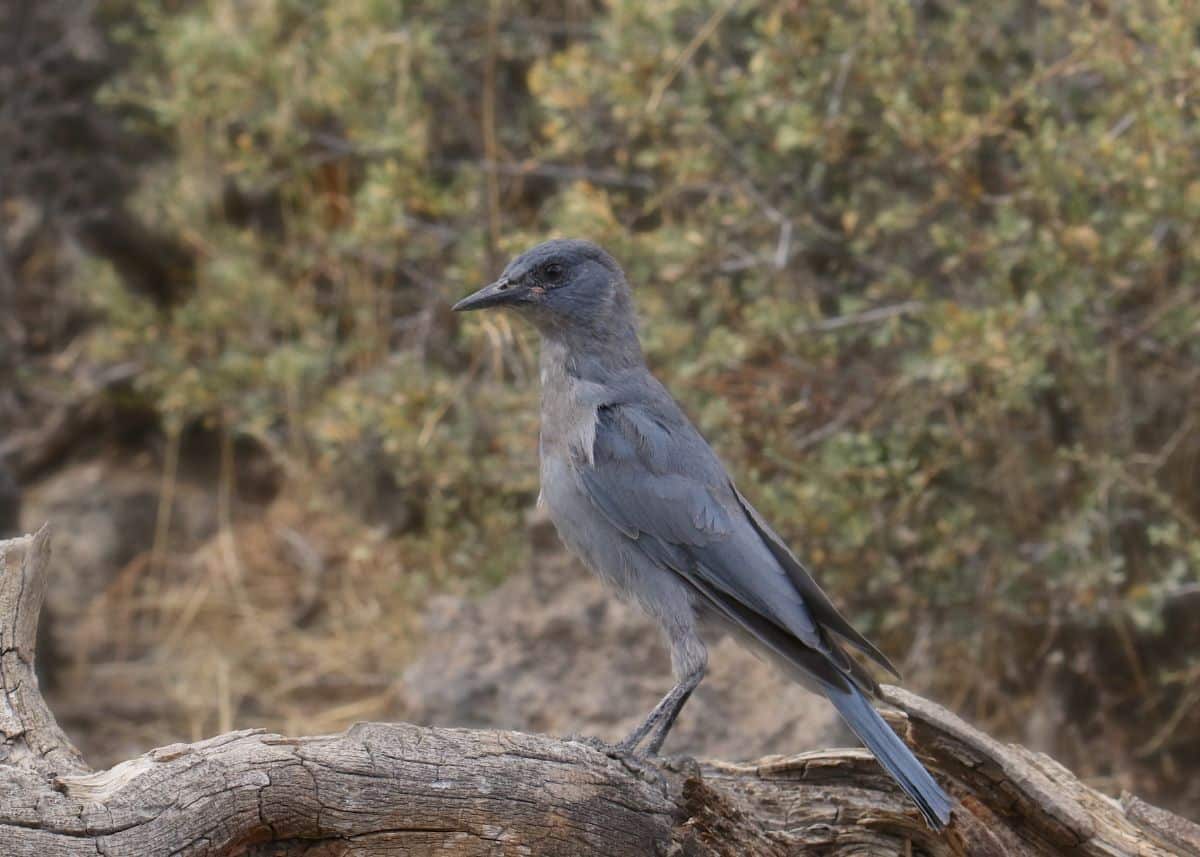
Pinyon Jays are a larger member of the Jay family. While they are related to Blue Jays and have comparable white wing spots, they do not have black facial markings or blue crests. Only their heads are vibrantly colored, as their bodies are primarily dusky gray.
15. Red-legged Honeycreeper
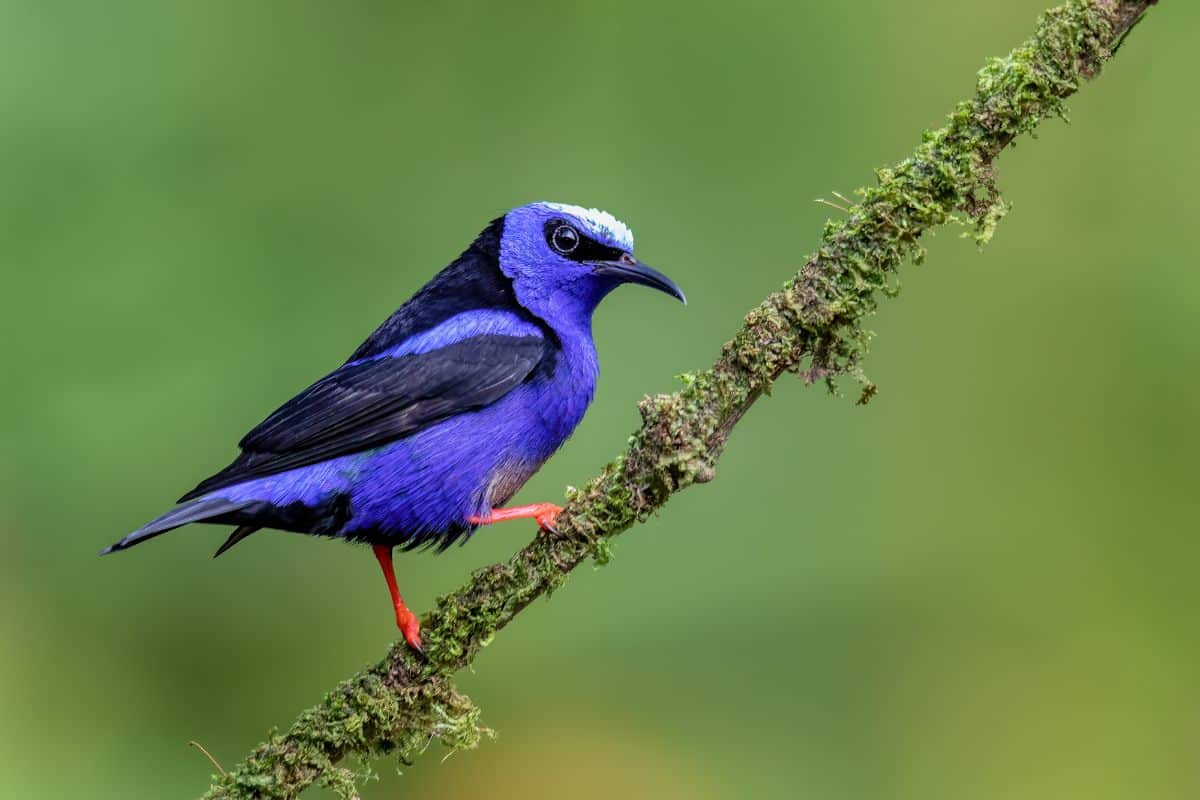
This tropical bird is a Tanager native to southern countries like Mexico and Brazil. The Red-legged Honeycreeper gets its name for its scarlet-colored legs, but its plumage resembles Blue Jays, complete with an angular black eye mask.
16. Steller’s Jay
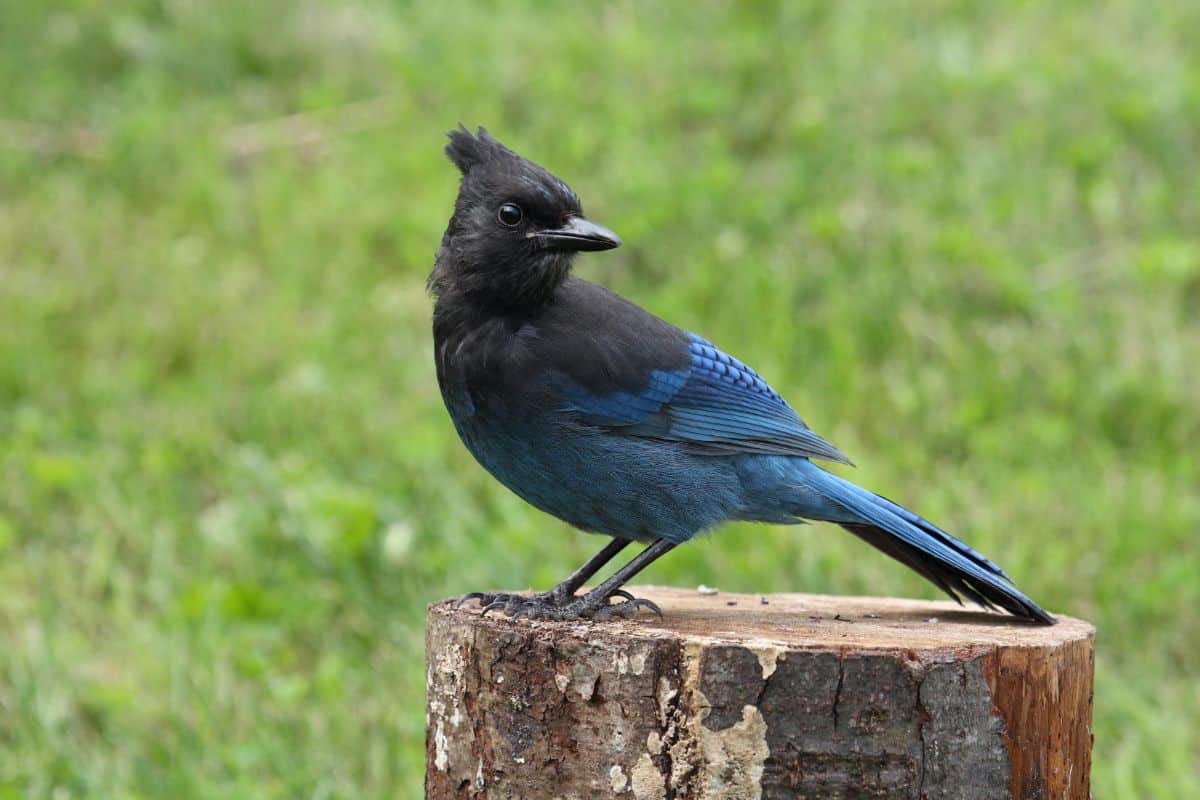
Steller’s Jay are very similar to Blue Jays, as they proudly wear a large, black crest down their heads and have the same shock of aqua-colored plumage. One key difference is that this species lacks white spotting on the wings.
17. Woodhouse’s Scrub Jay
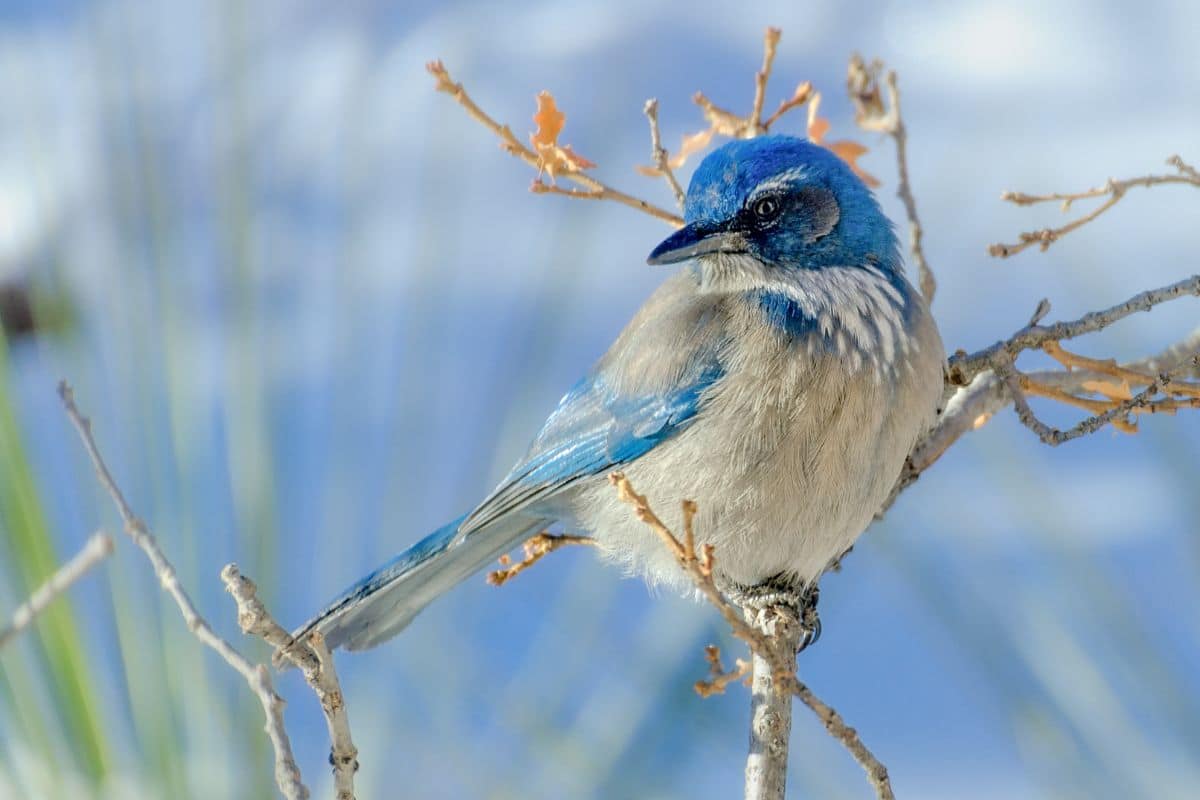
Woodhouse’s Scrub Jay is reminiscent of the Pinyon Jay, but their bright blue feathers end at the belly rather than the neck. These western North American birds also have a long, narrow bib of patchy white feathers.
Wrapping Up
Whether you’re an enthusiastic amateur ornithologist or simply curious about the visitors who frequent your backyard feeder, it can be tricky to tell the difference between birds that look like Blue Jays.
With a bit of practice and the help of this handy guide, you’ll be able to identify your Mountain Bluebirds from your Belted Kingfishers in no time.
